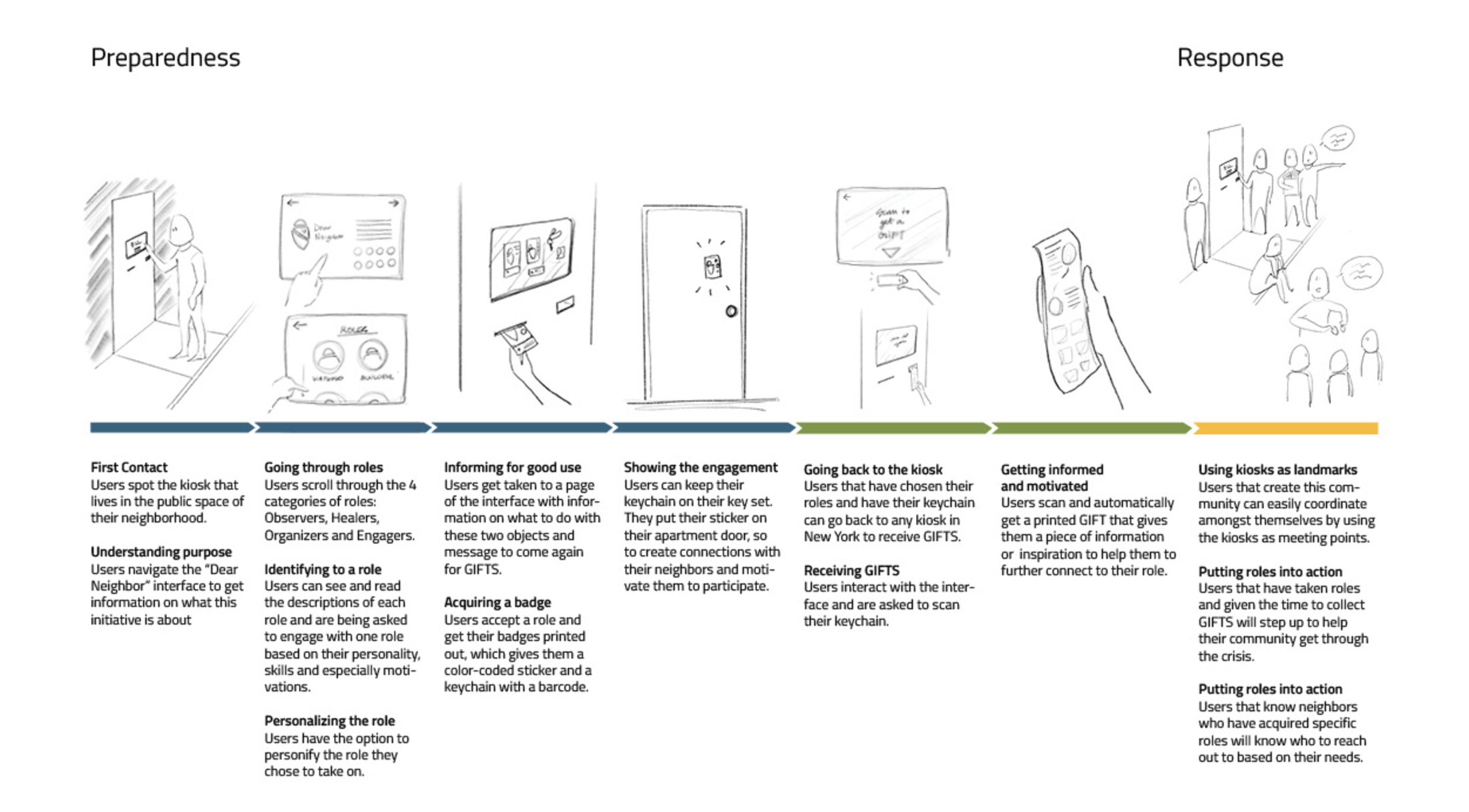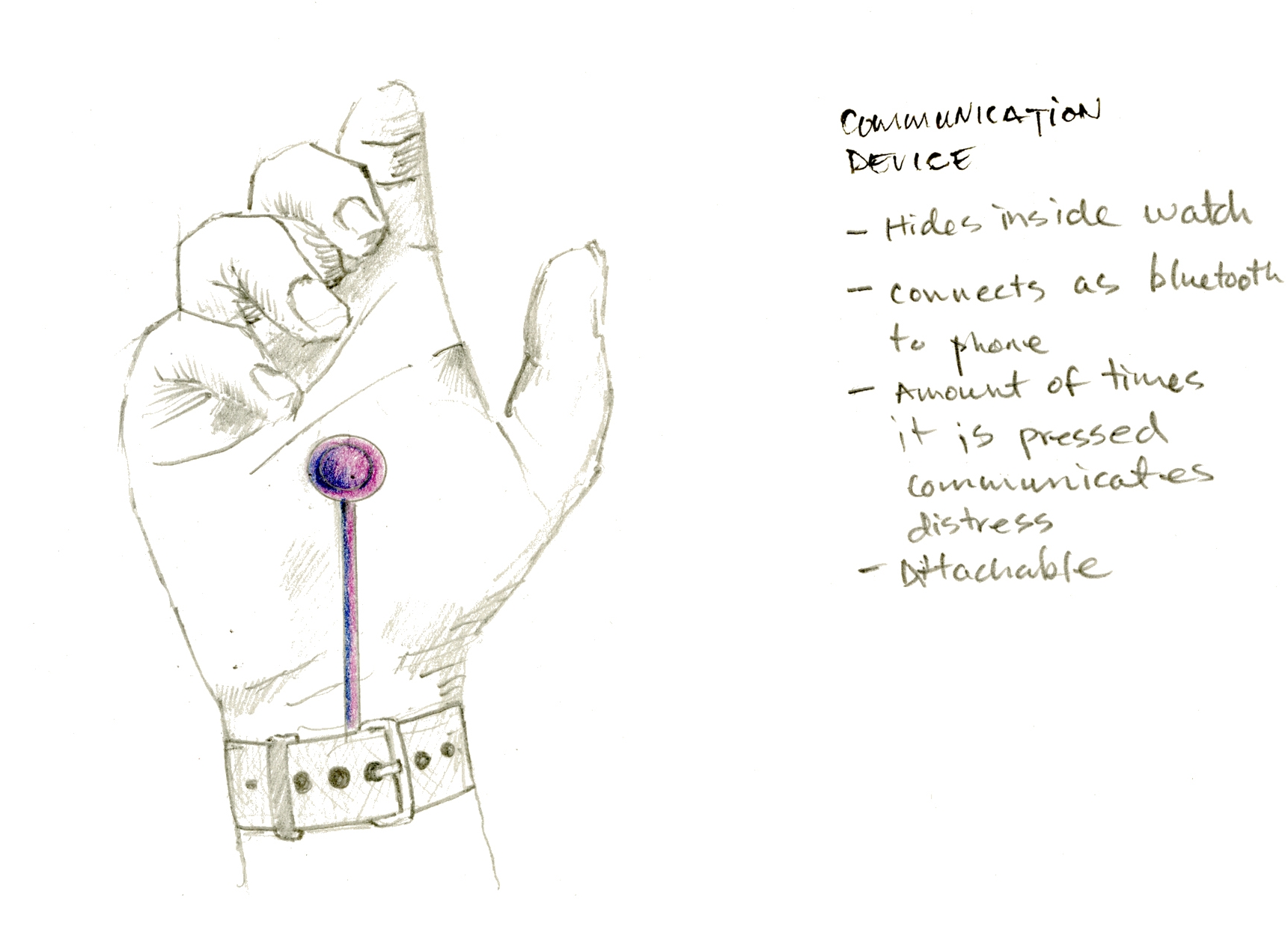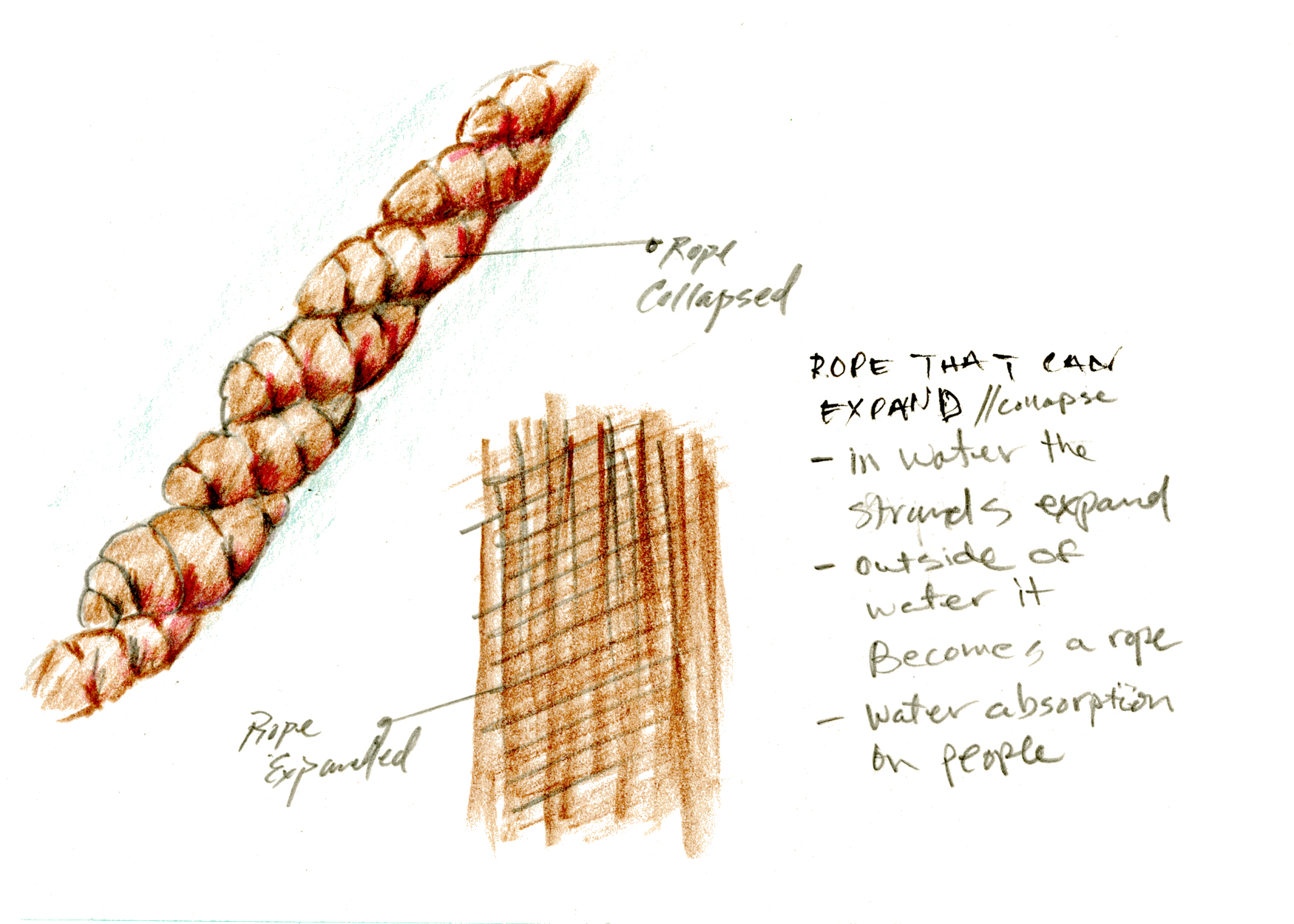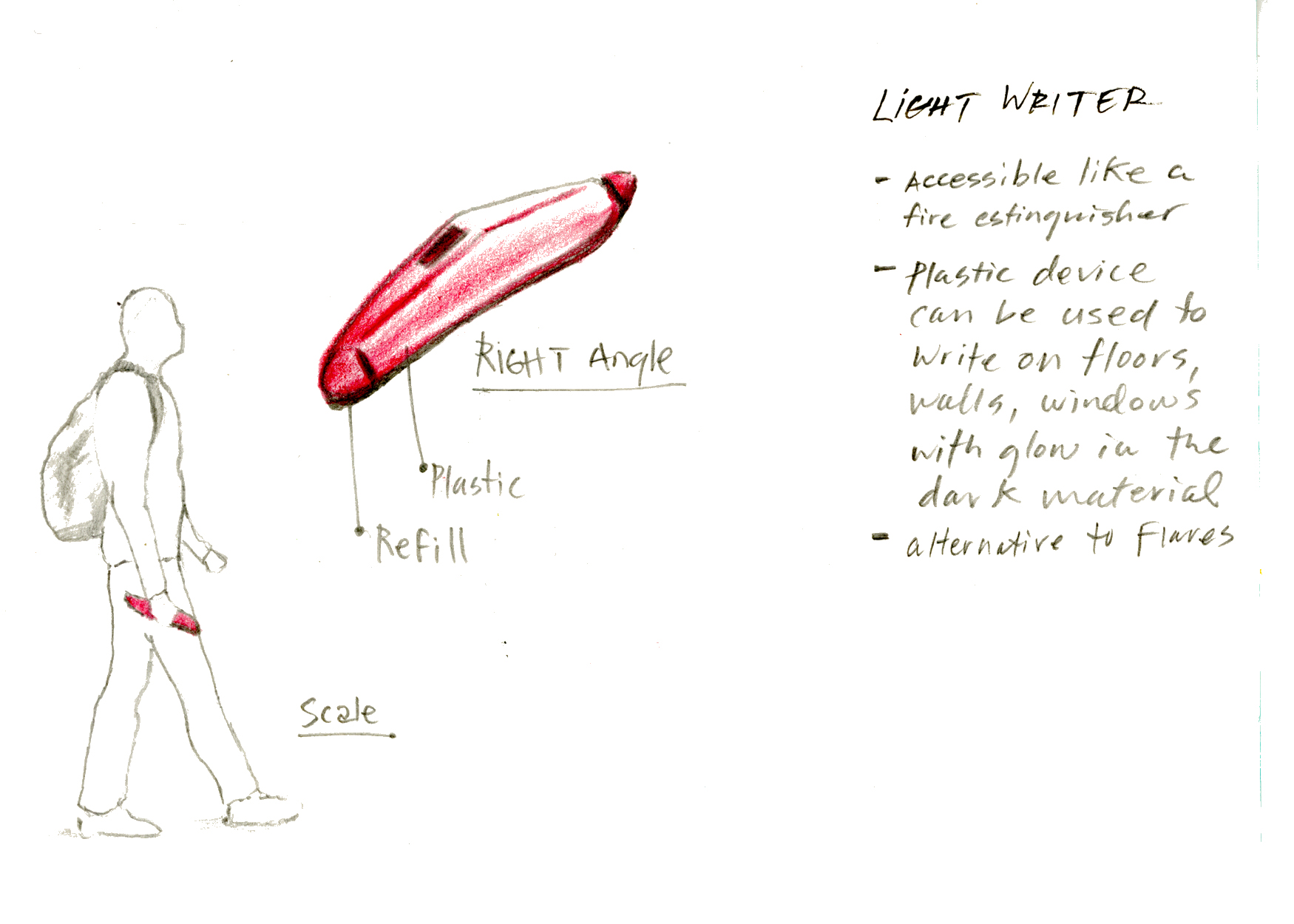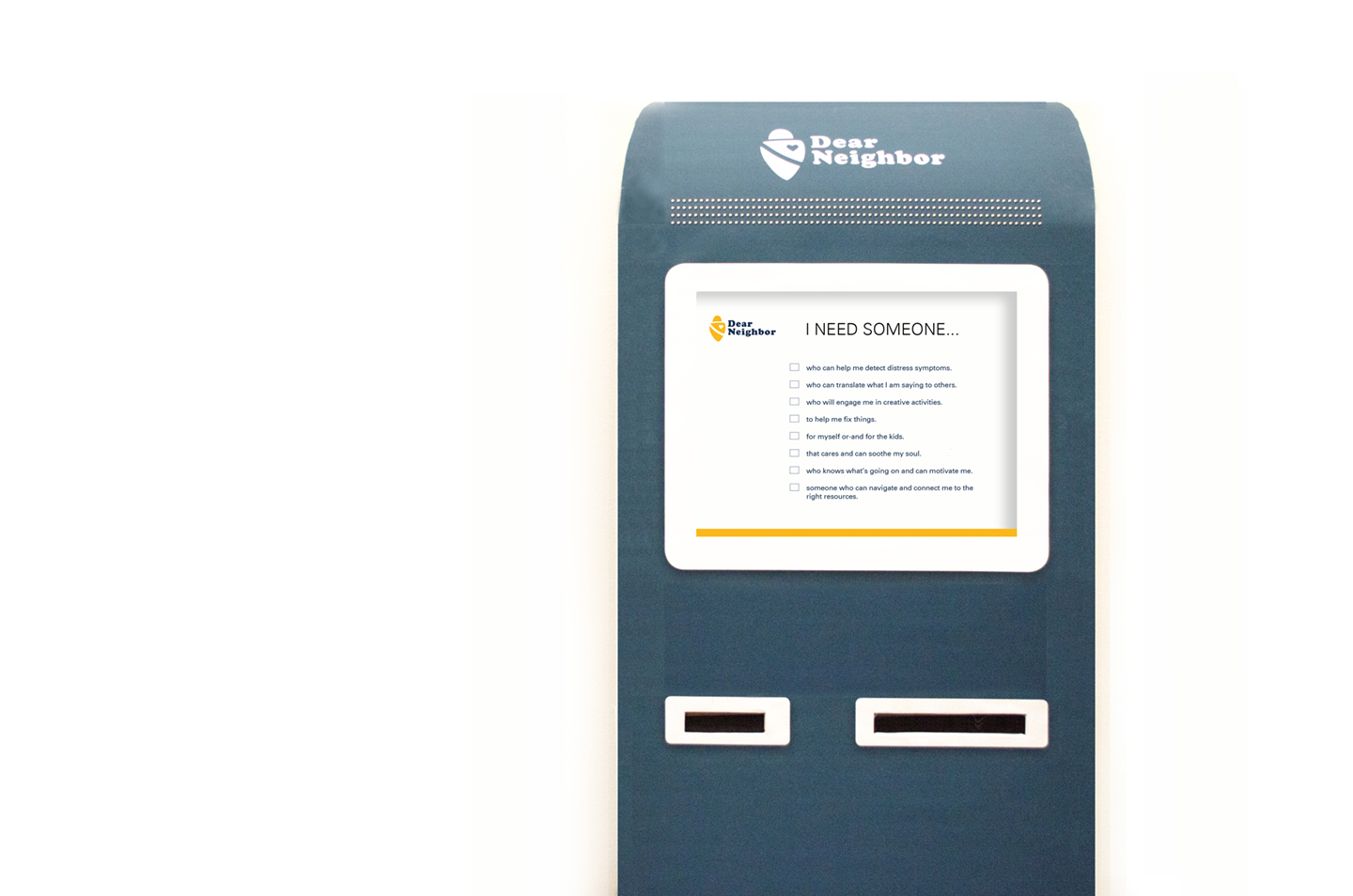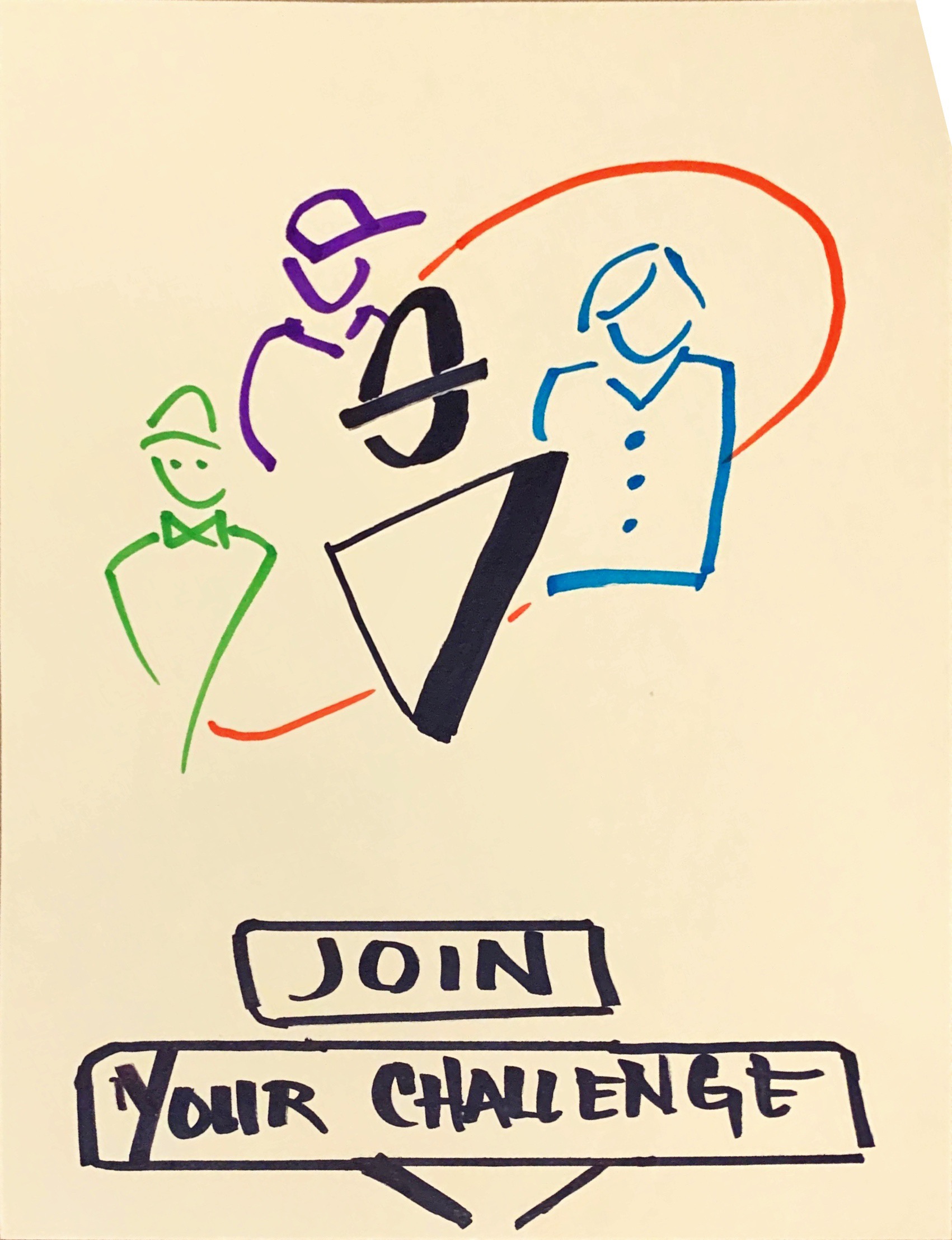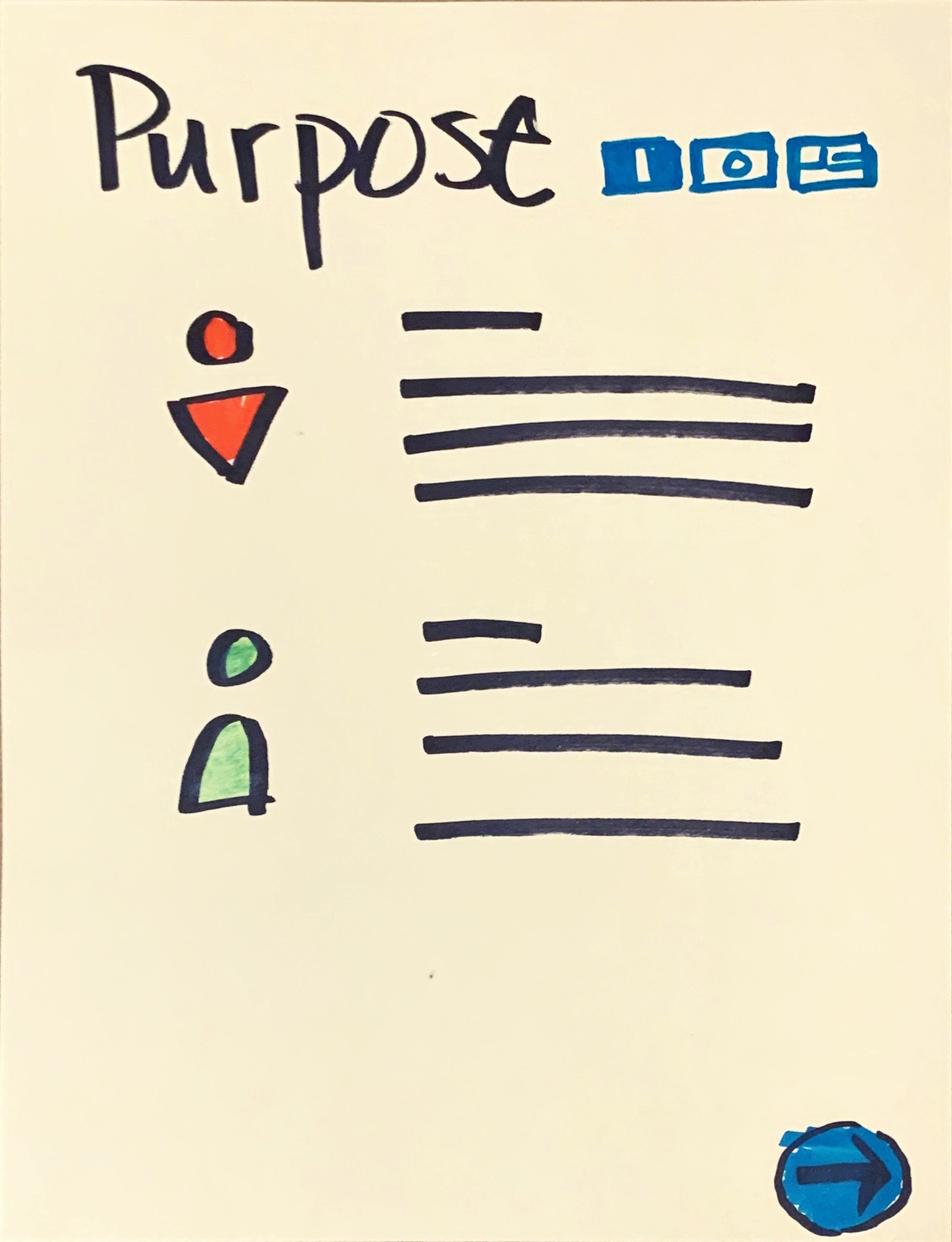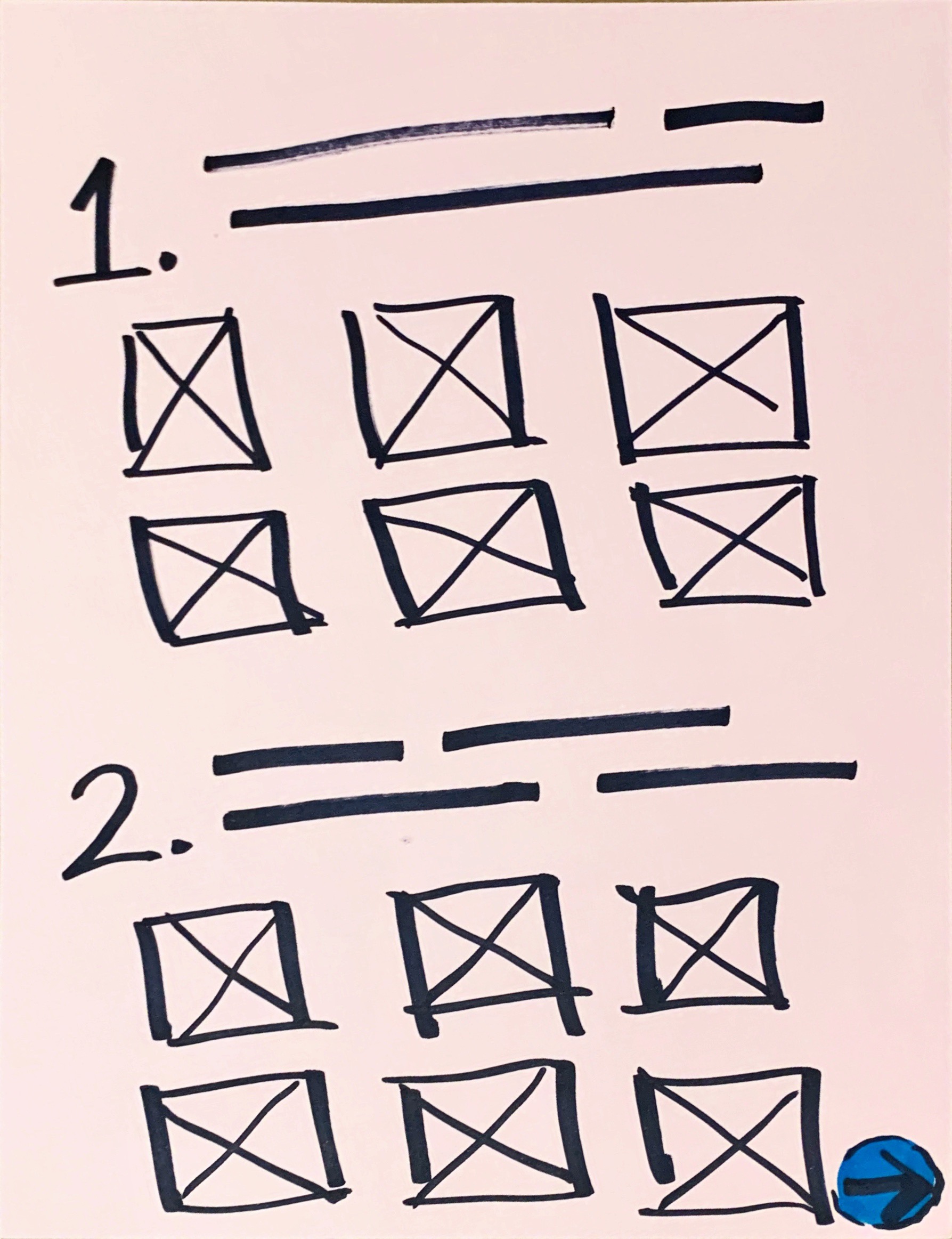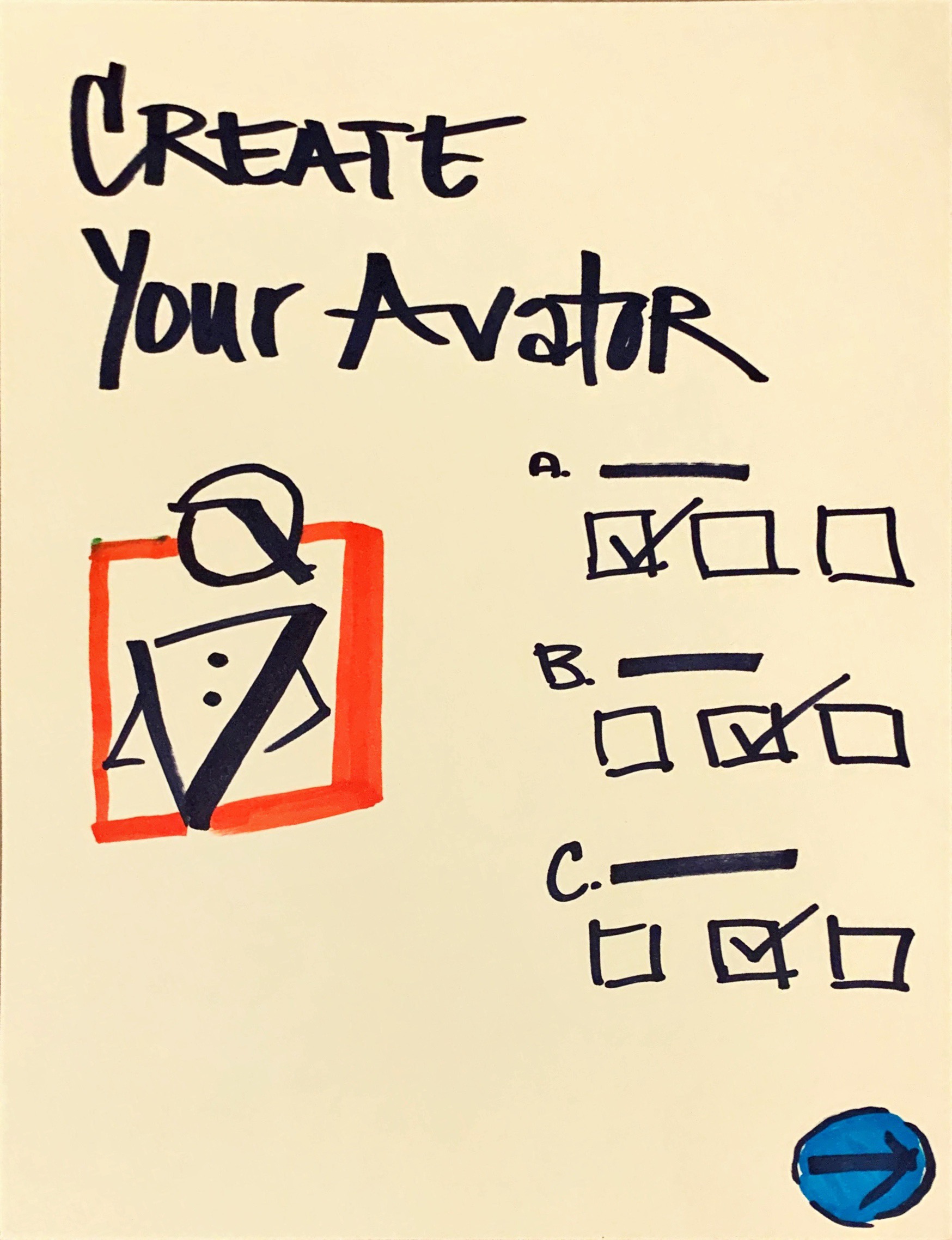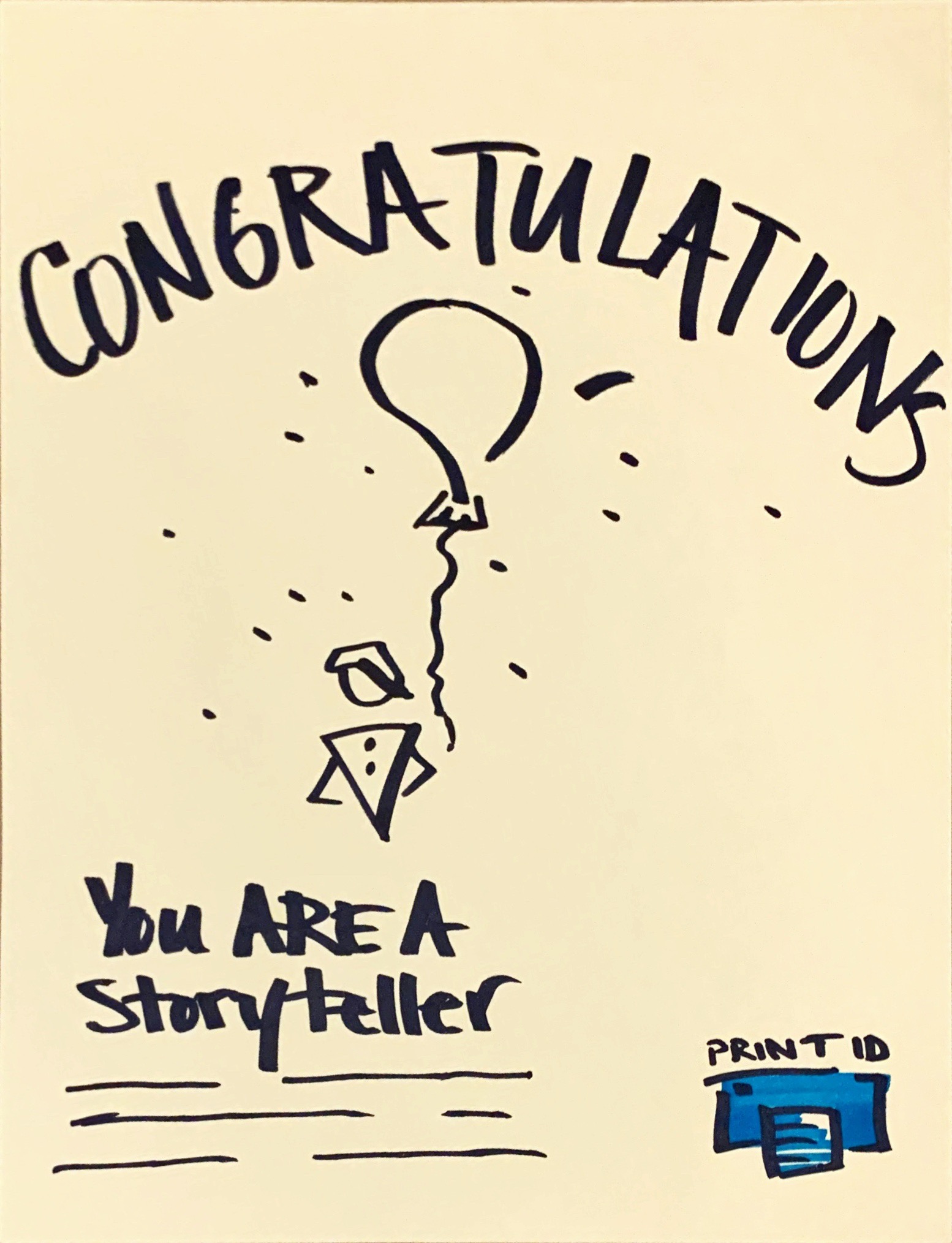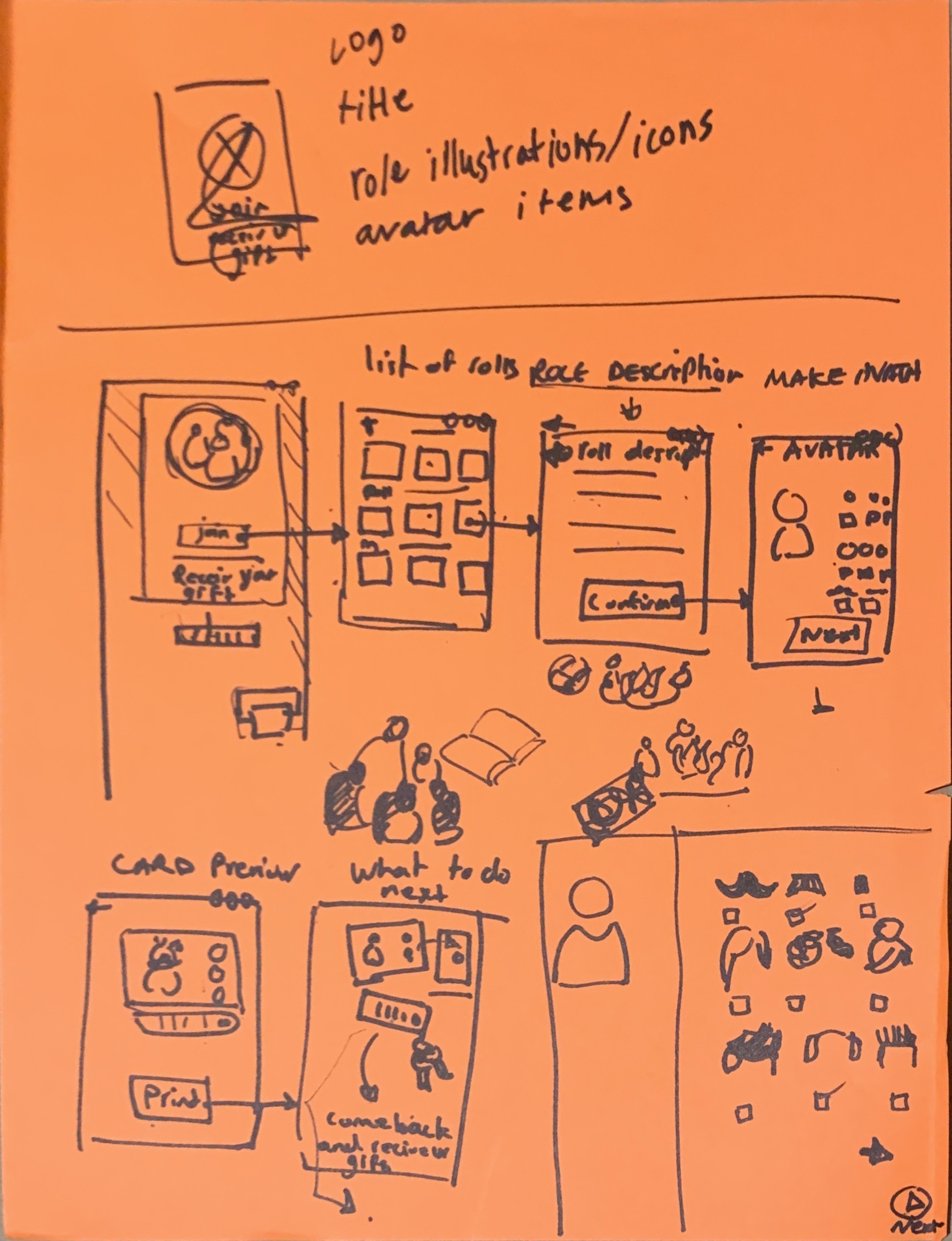Unanticipated Disasters
Dear Neighbor: An Alternative Model for Emergency Volunteering
ABSTRACT: Unanticipated disasters produce challenges that threaten human life, but also human rights and social justice. Designers are responsible for deploying creative strategies that respond to the changing conditions of such situations in crisis. Utilizing a collaborative approach, we employed an Alternative Unknowns method to facilitate designers working across disciplines to investigate, experiment, propose, and test systems. The concept is articulated through research, ideation, prototyping, and a visual service map.
Collaborators: Melika Alipour & Sophie Riendeau
Partnership: Office of Emergency Management NYC
Featured Publication: The Blackout That Never Happened, ARUP
Role: Research Collaboration, visual design, interactions, mapping
Kiosk // A prototype kiosk with a mock-up interface of the Dear Neighbor product and service design. Photo from a simulation prototype event.
Proposed Concept: Dear Neighbor
A service design proposal in the public space for local communities of New York to feel empowered by instilling a sense of civic duty; informing and connecting them to support each other during a time of hardship. Through the service, users harness their personality traits to establish a sense of community in their neighborhoods before an event of a disaster.
Collateral components include a service kiosk with user engagement touchpoints, identification badges, and communication devices for community engagement. The process below highlights phases of discovery, development, and simulation of the proposal.
How it Works: A User Blueprint
An early draft of user-engagement touchpoints. Diagram Credit: Sophie Riendeau

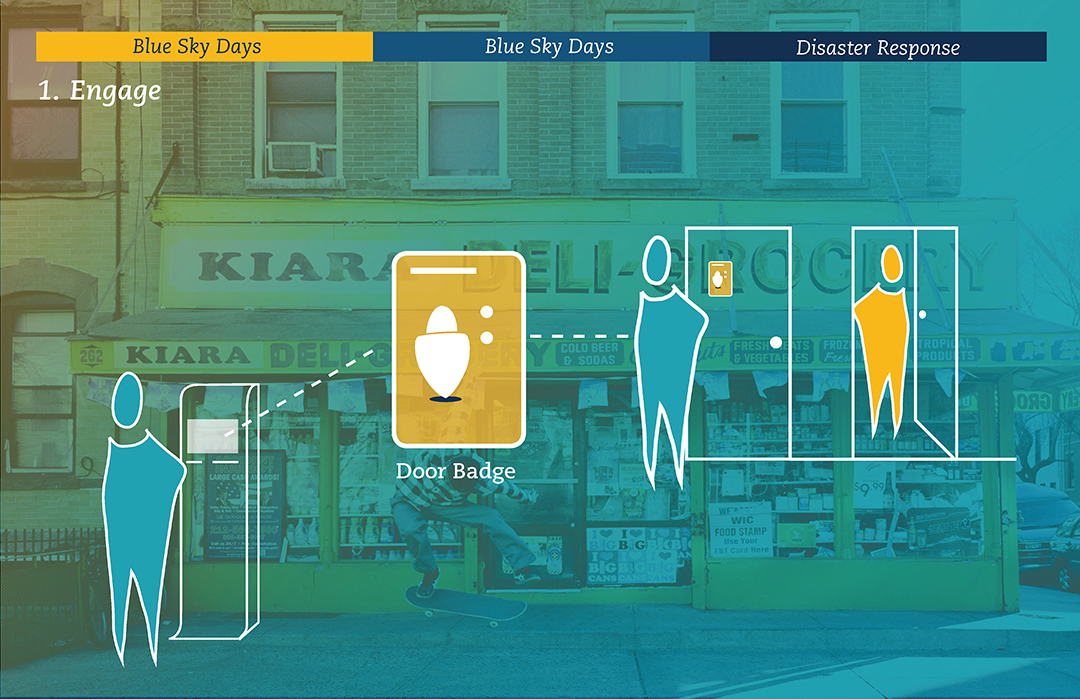
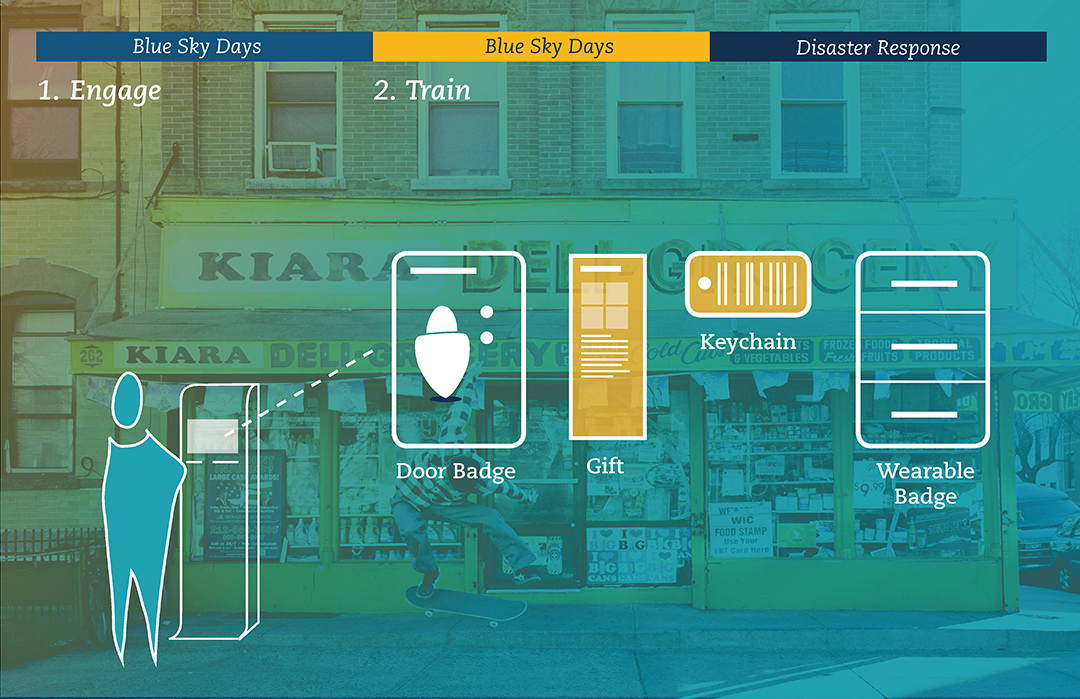
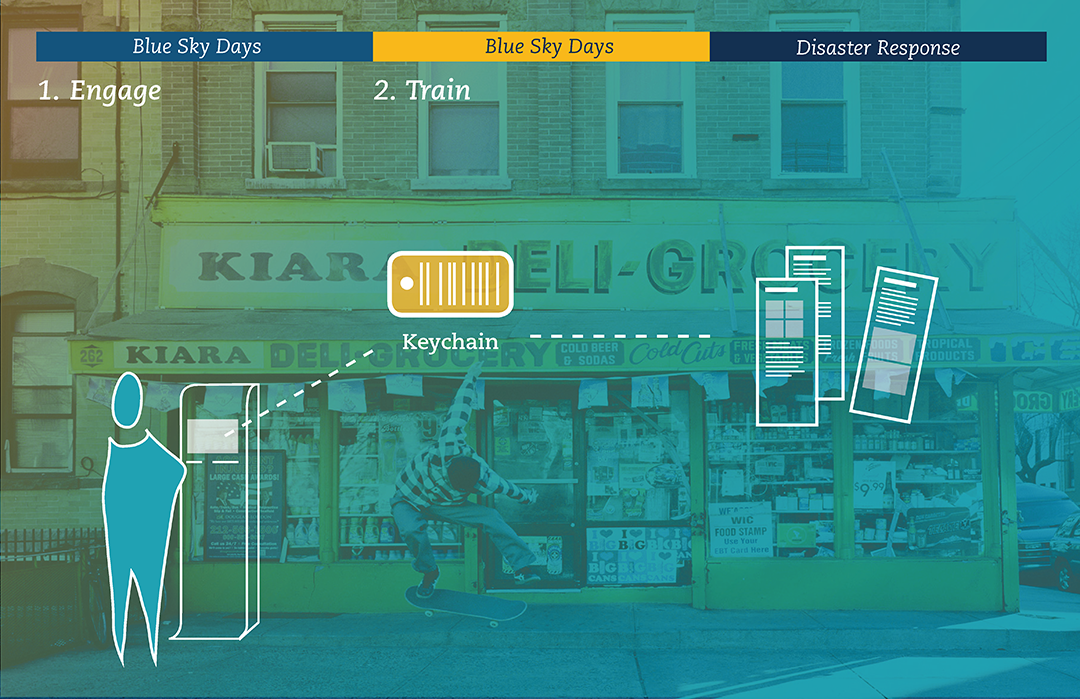

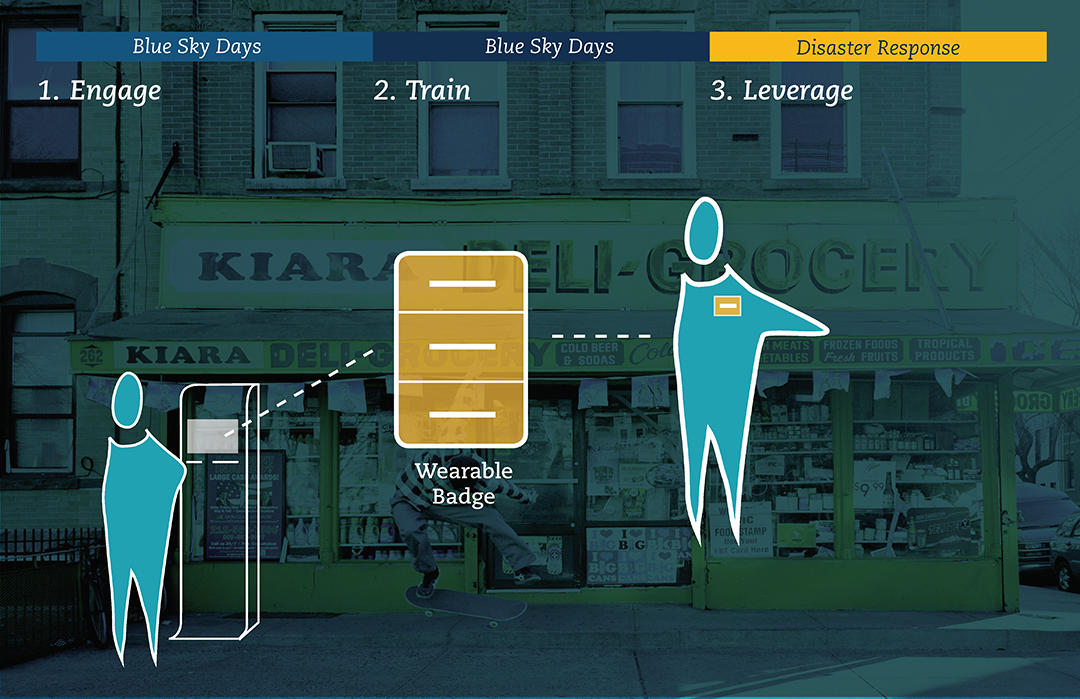
Collateral Assets for Service
Badges // Personality card sets.
Personality Tag // Detachable keychain tags.
Activity Sample // A printed example of a story vignette for users to practice personality skill sets.
Concept Development Process
Phase 1: Research
Secondary Research
Stakeholder Case Studies
Interviews
Synthesis
Phase 2: Stakeholder Analysis
Review Insights
Feedback Session
Phase 3: Ideation
Sketching
Mapping Patterns in User Stories
Scenario Building
Phase 4: Simulation
Live demo
Participant Recruitment
Interviews
Present to Stakeholder
Phase 1: Secondary research snapshot
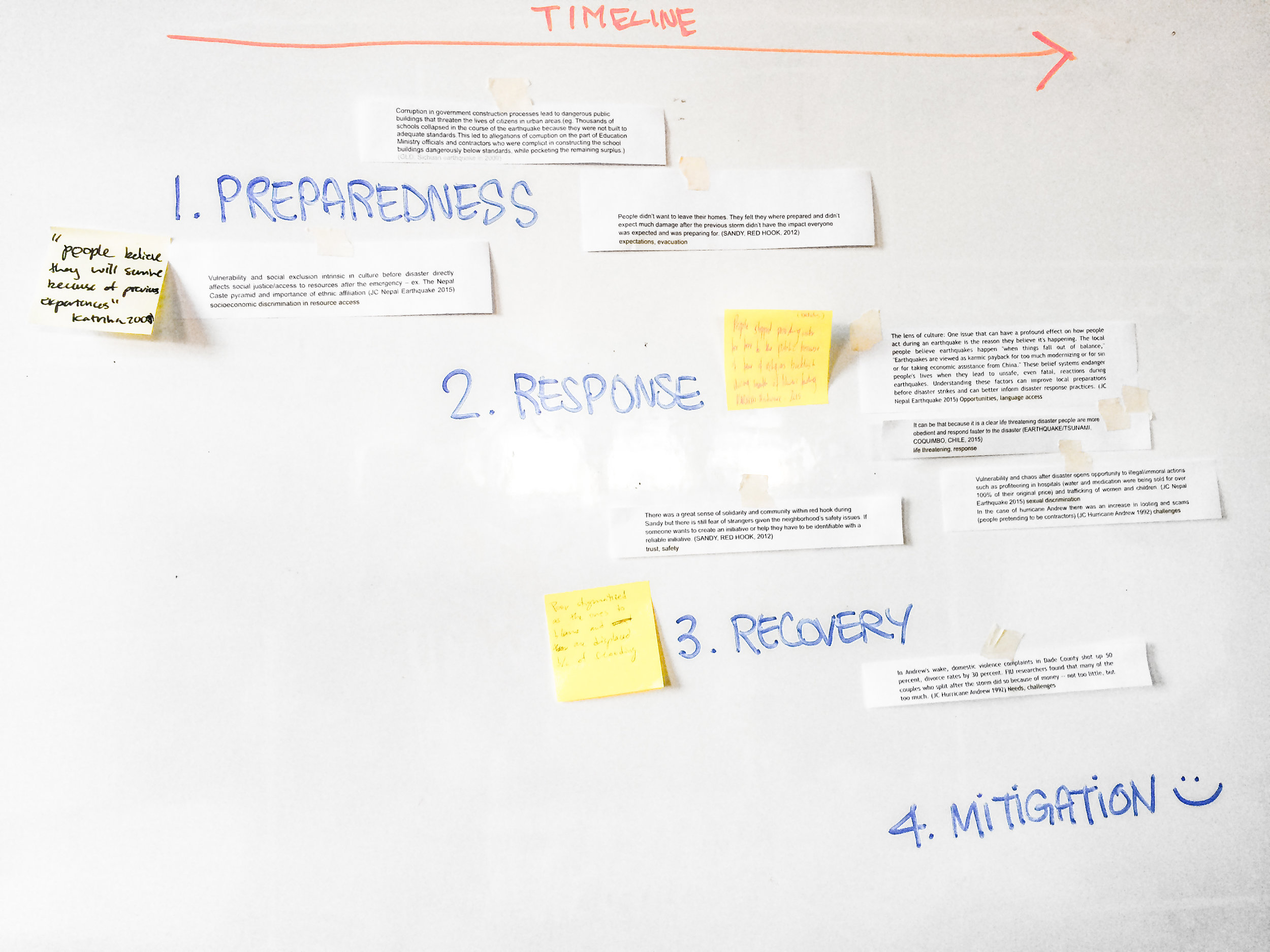
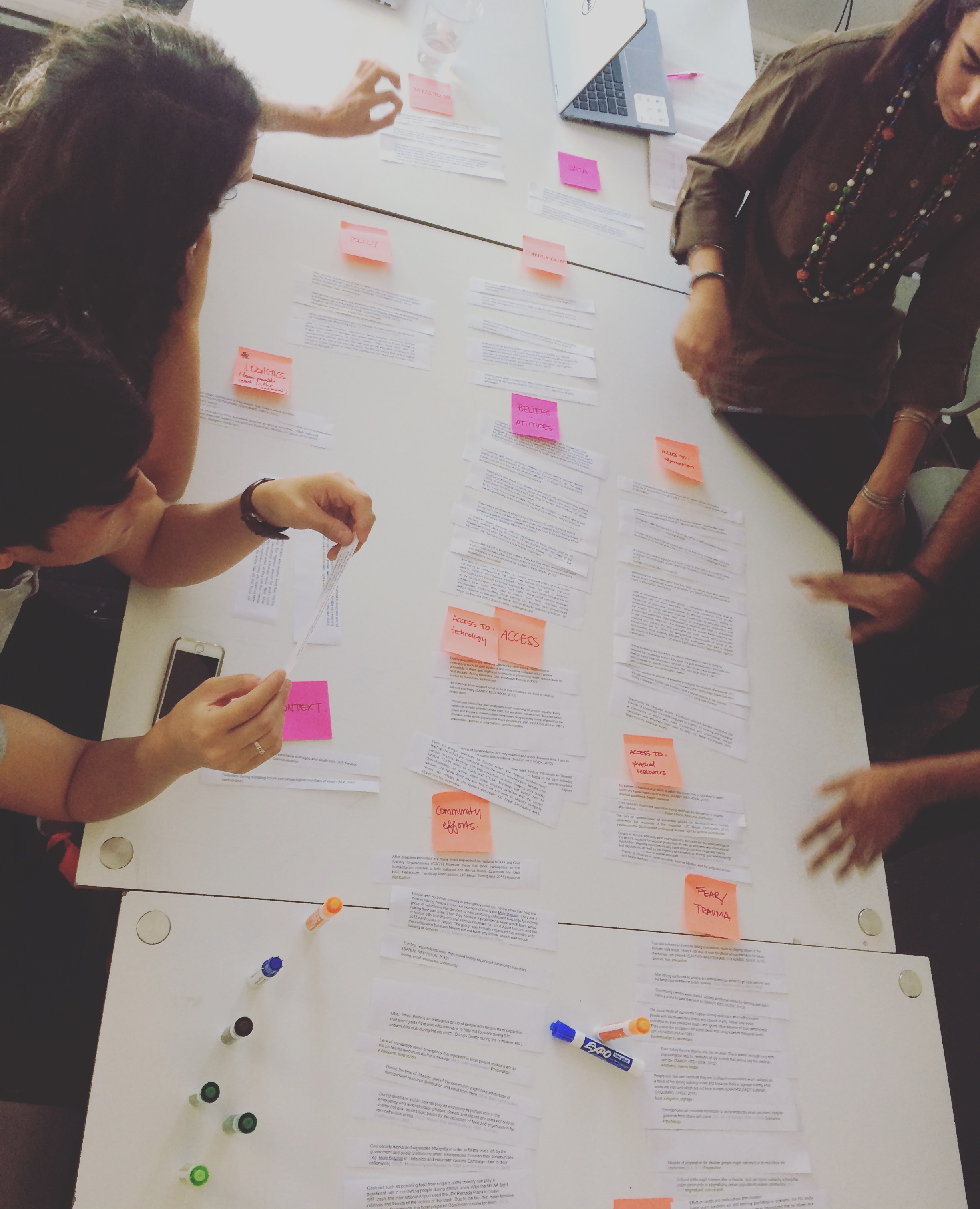
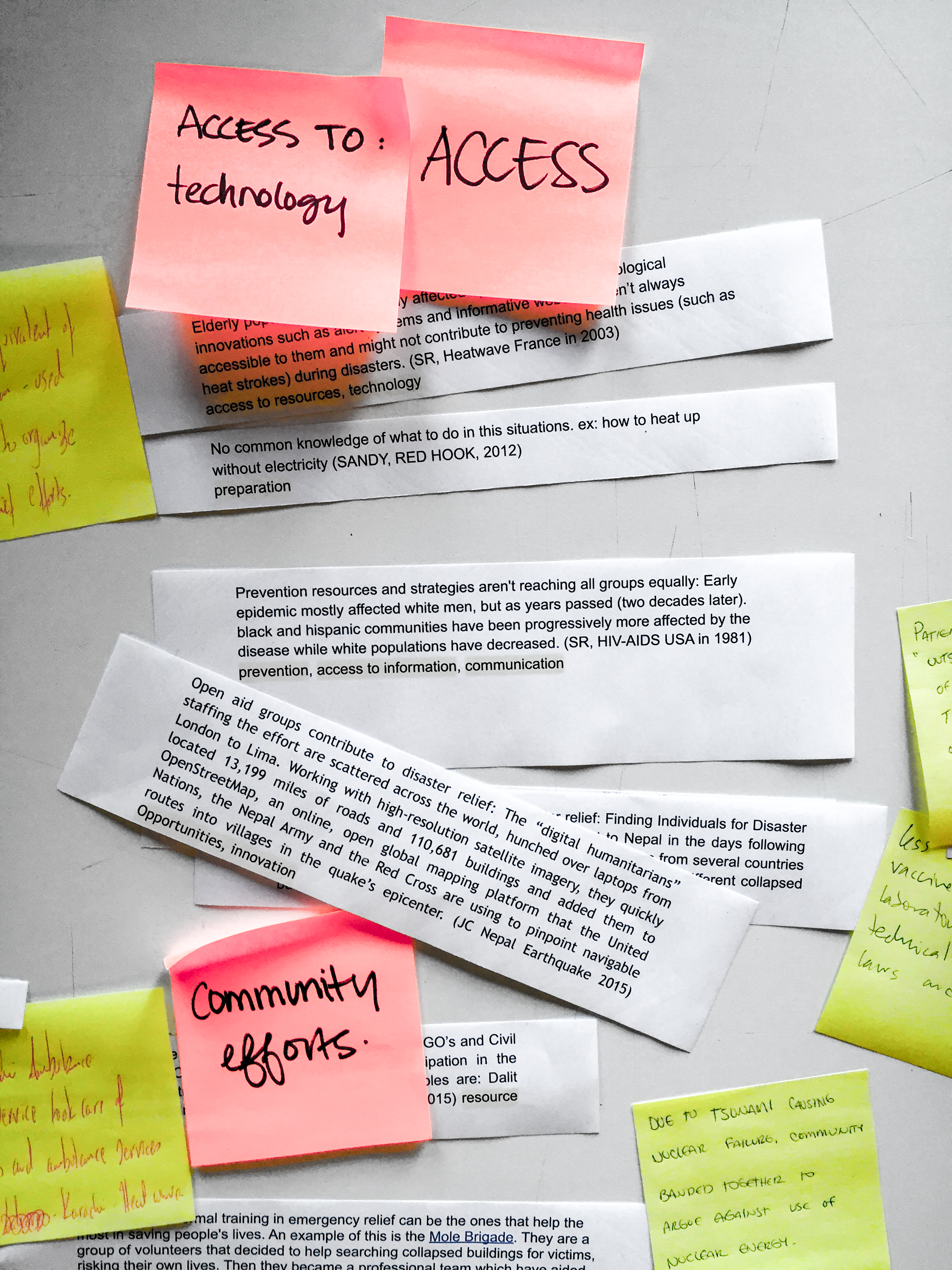
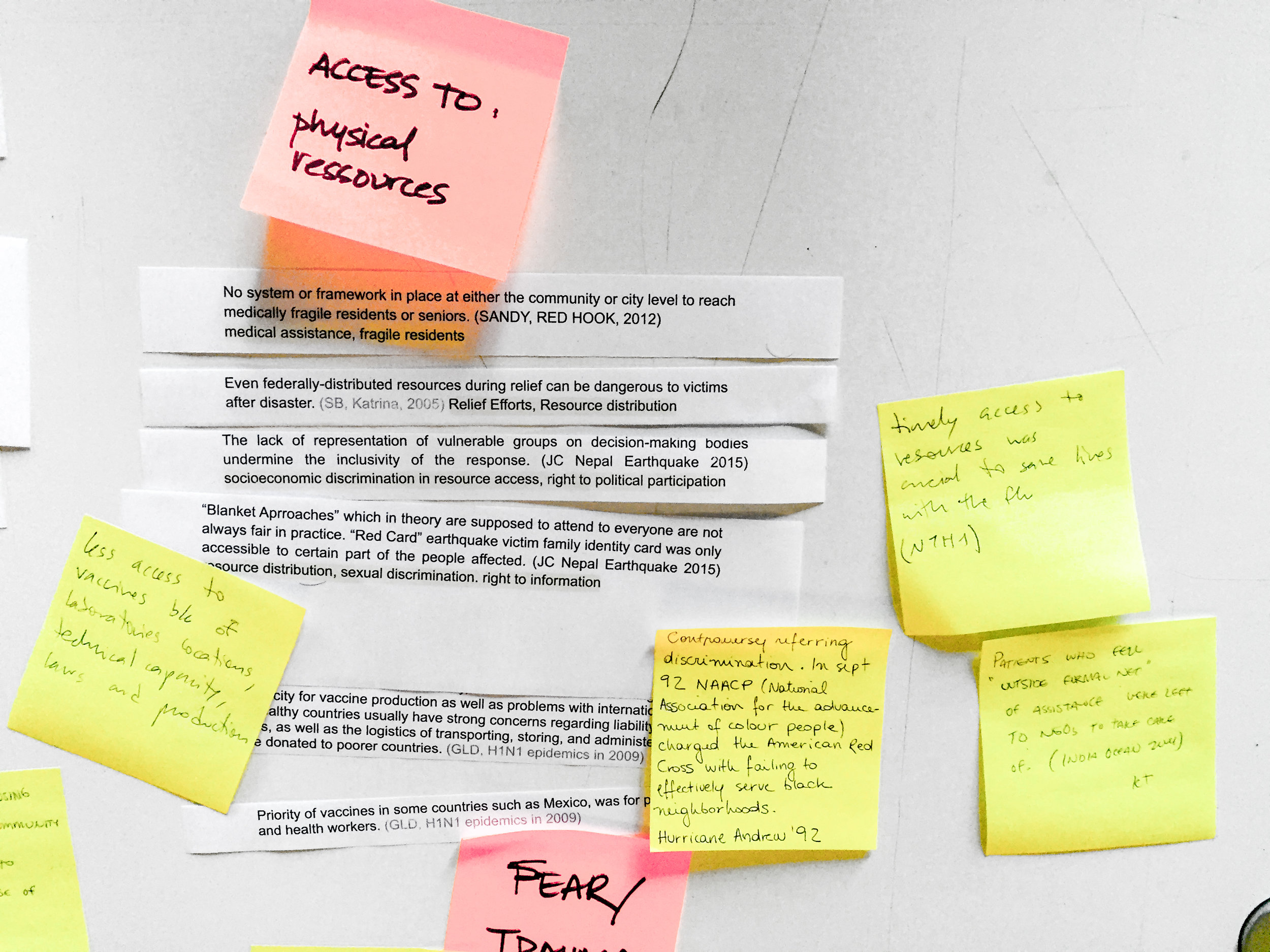

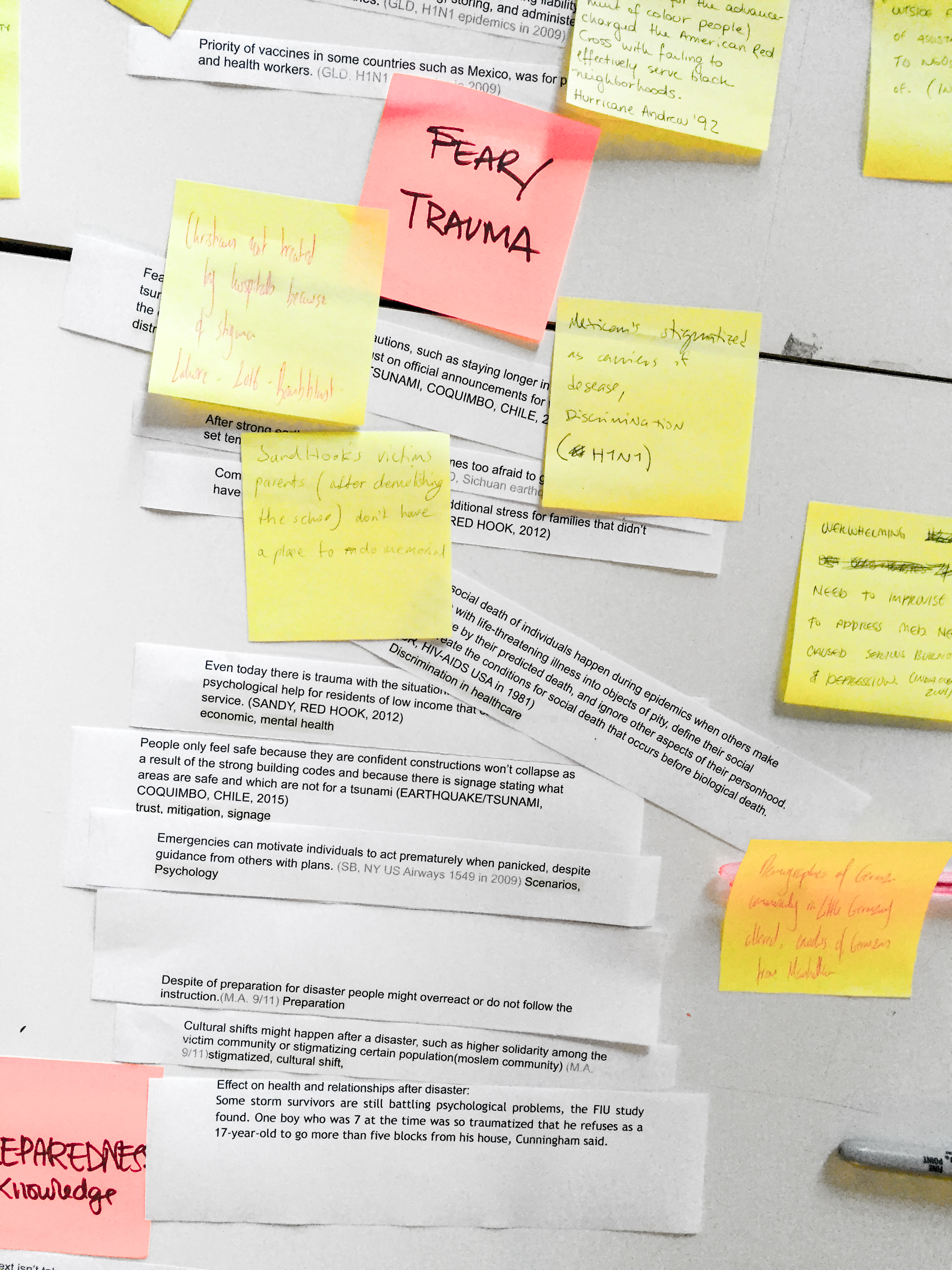
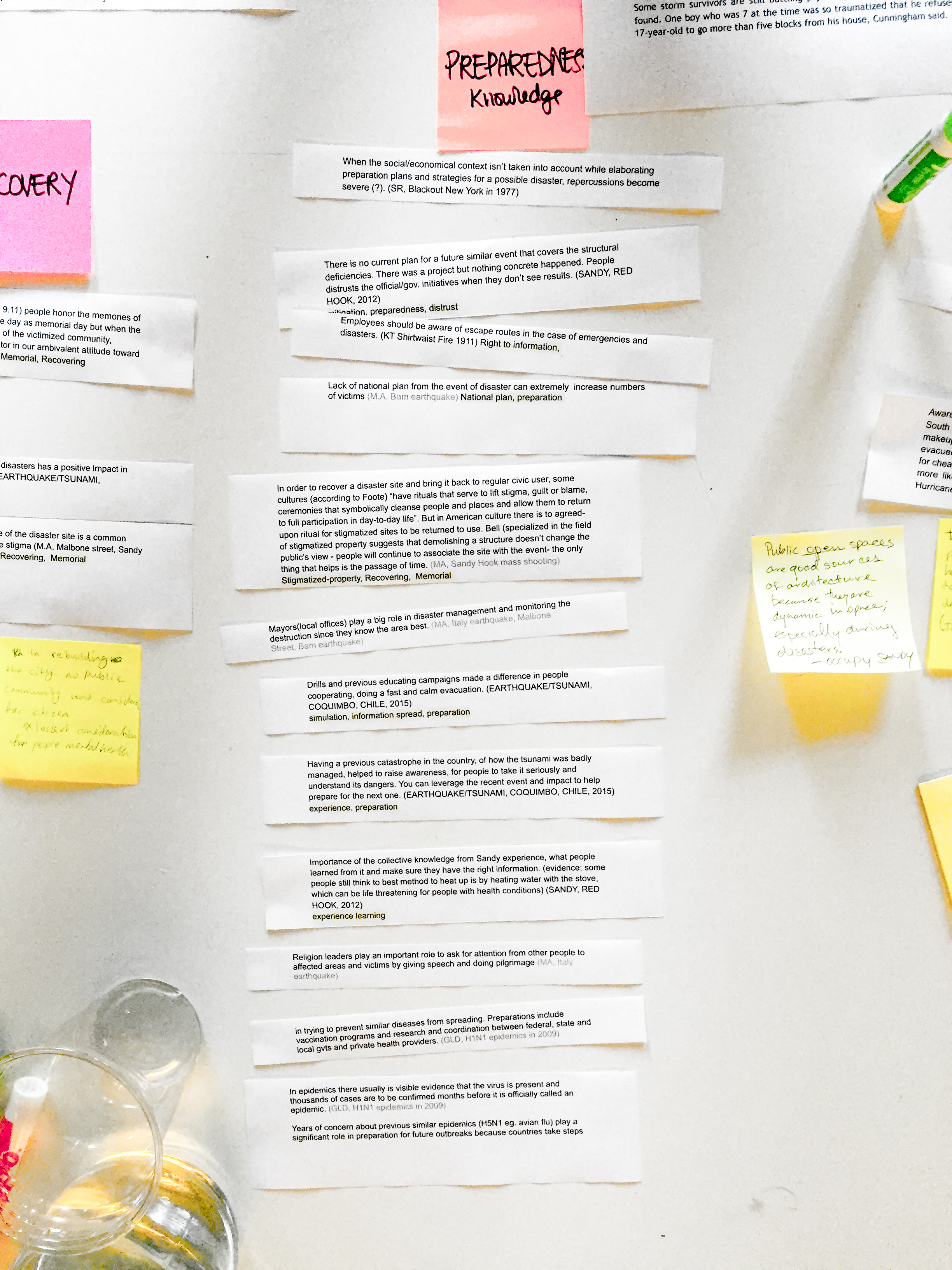
"We researched historical urban disaster case studies as well as the strategies devised to manage them. Each case was studied through the lens of the four-stage emergency cycle; preparedness, response, recovery and mitigation. Looking into newly developed or deployed tactics, technologies, and policies in each case, we scanned to understand what worked and what didn’t. Therefore, we identified the failings challenges that still must be worked on as we confront the possibility of dealing with these situations in New York. Our main focus was on understanding the social justice implications in these emergency scenarios, particularly in regard to resource distribution and language access.
Our investigations into human caused disasters such as the terrorist attacks of 9/11 and naturally-occurring events such as the 2015 earthquake in Nepal brought us valuable insights on successes and failures of past events. As the second part of the research, our team shared individual observations to identify patterns and grouped them according to recurring themes to be addressed in moving forward: context systems of organization, community, memory, communication, information and psychology." – Transdisciplinary Studio, Fall 2016
Mapping Key patterns
“Boaters saved 500,000 New Yorkers from the World Trade Center site on the day the towers collapsed.”
“Small gestures such as providing food from origin’s home country can play a significant role in comforting people during difficult times.”
“During disasters, public spaces play an extremely important role in the emergency and reconstruction phases. Streets and plazas are used not only as shelters but also as strategic points for the collection of food and organization for reconstruction works.”
“People with no formal training in emergency relief can be the most helpful in saving people’s lives. Eg: Mole Brigade - a group of citizens that searched collapsed buildings for victims.
”
“Even today there is trauma with any situation similar to Sandy or warning of a possible storm/flood. There wasn’t enough long-term psychological help for residents of low-income communities that cannot pay for medical service.”
Phase 2: Research Synthesis & Stakeholder Analysis
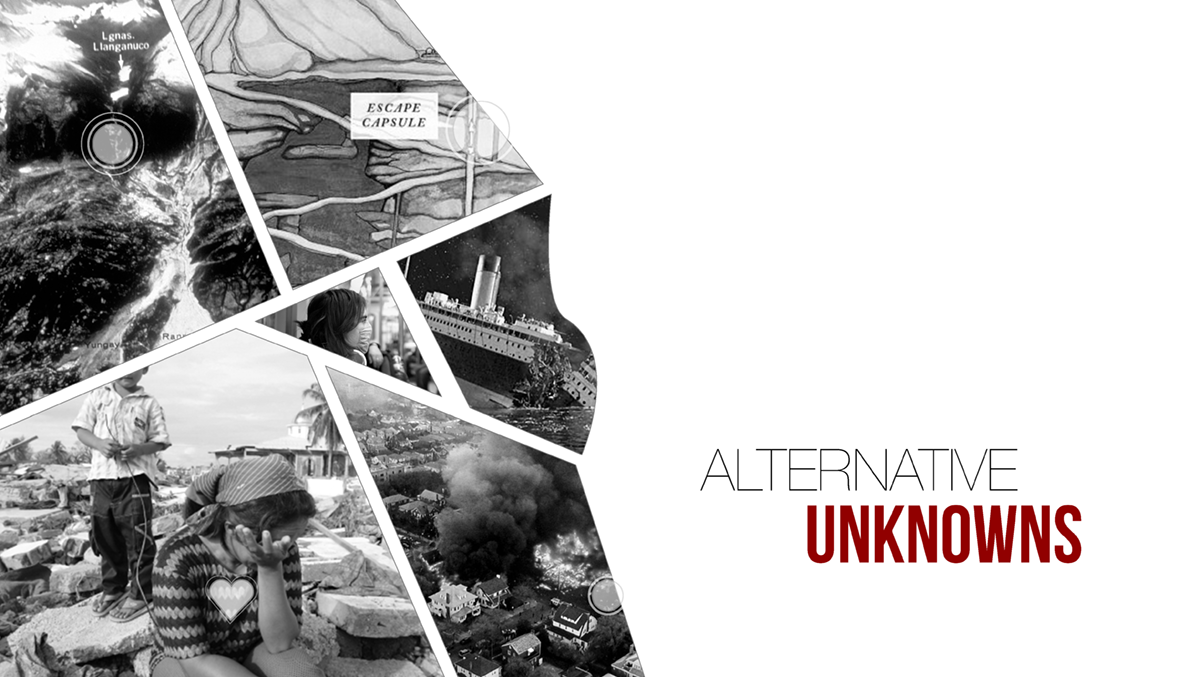
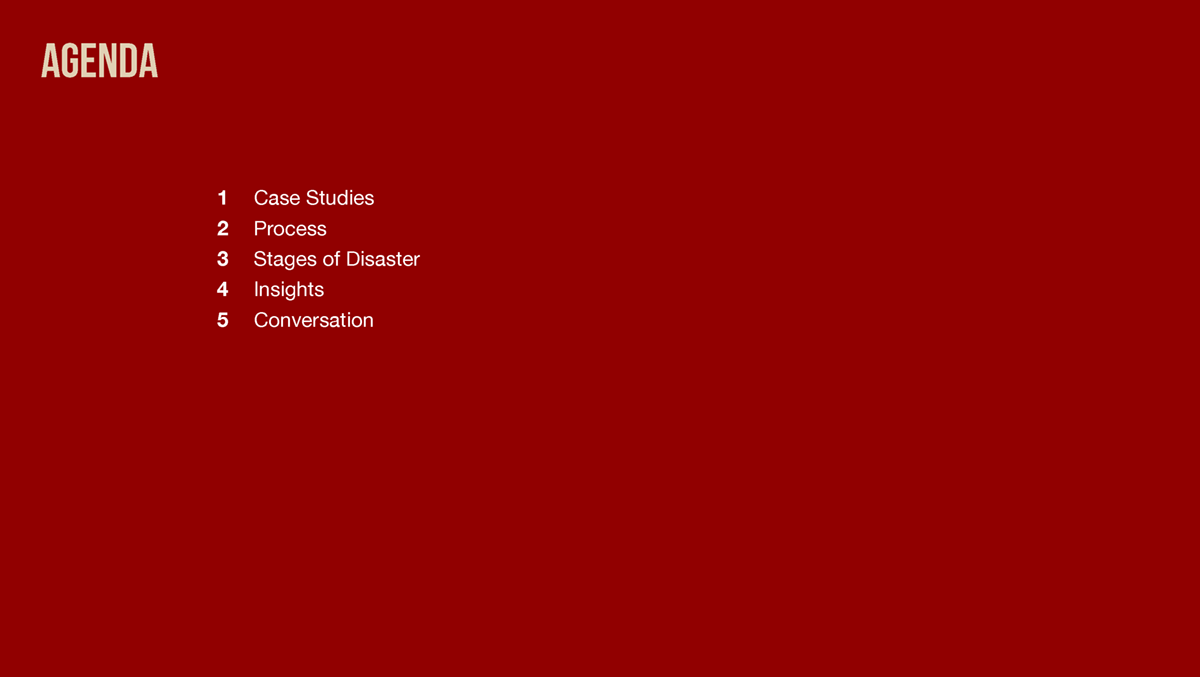
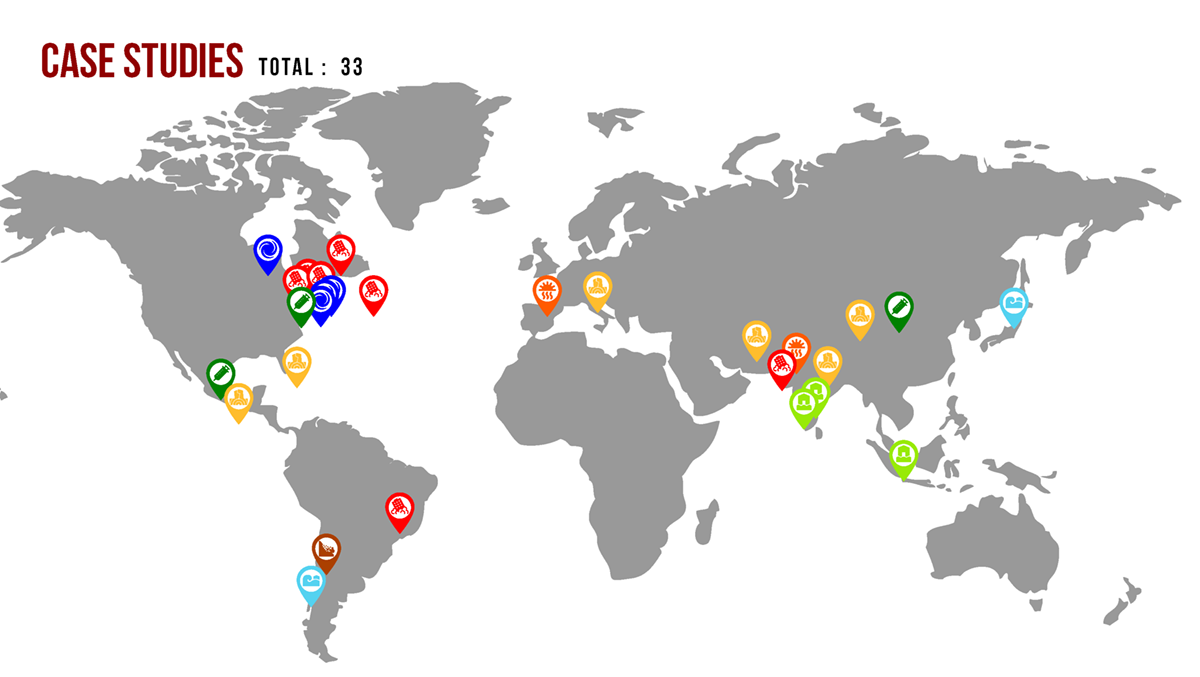


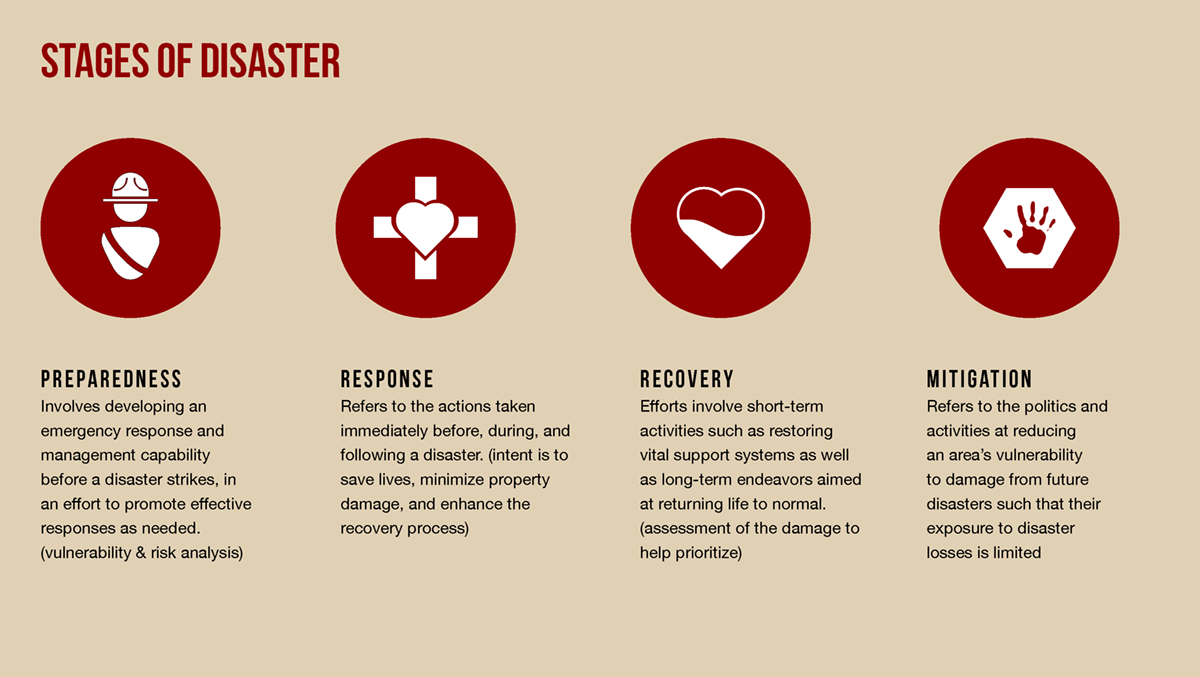
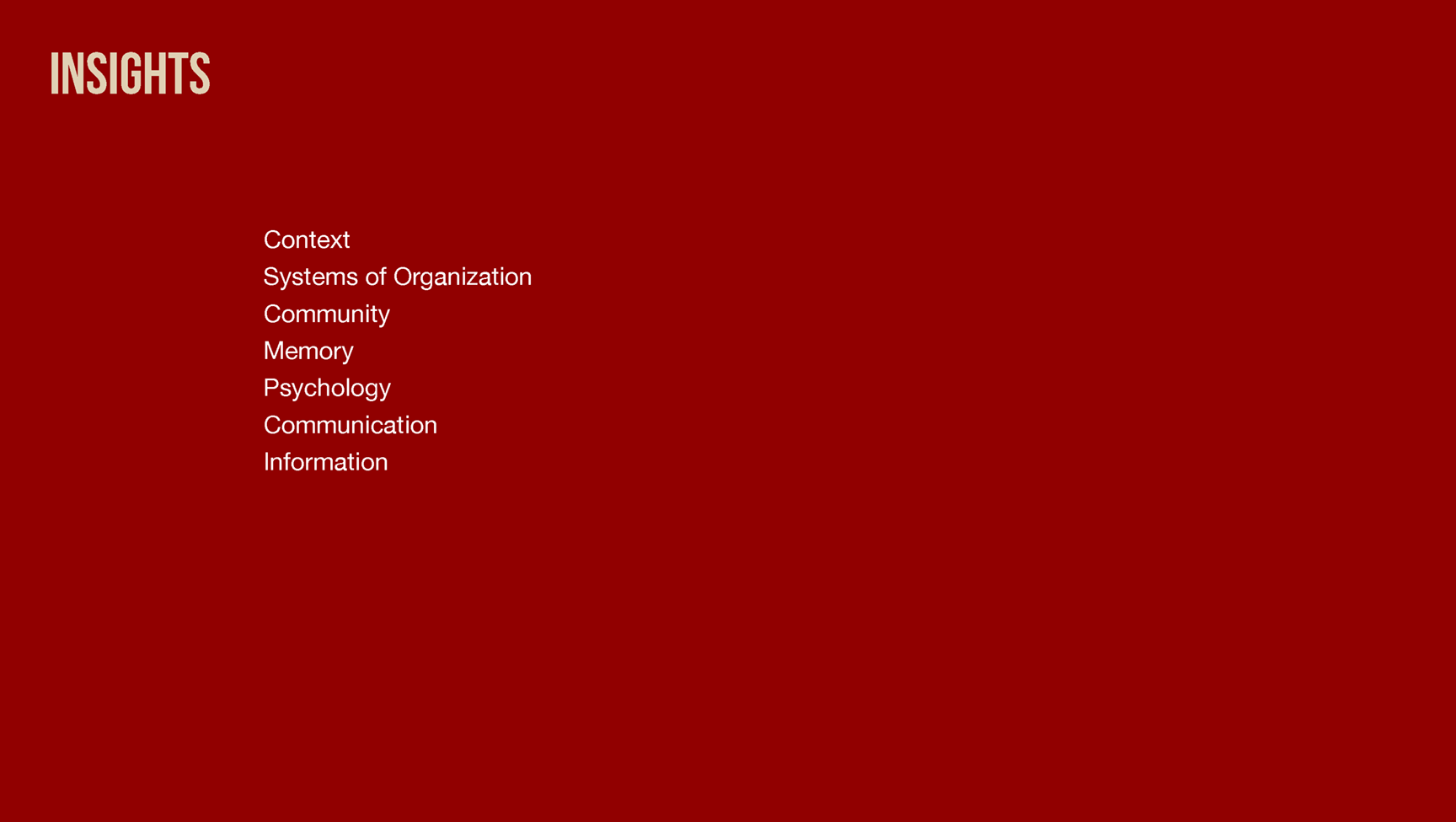
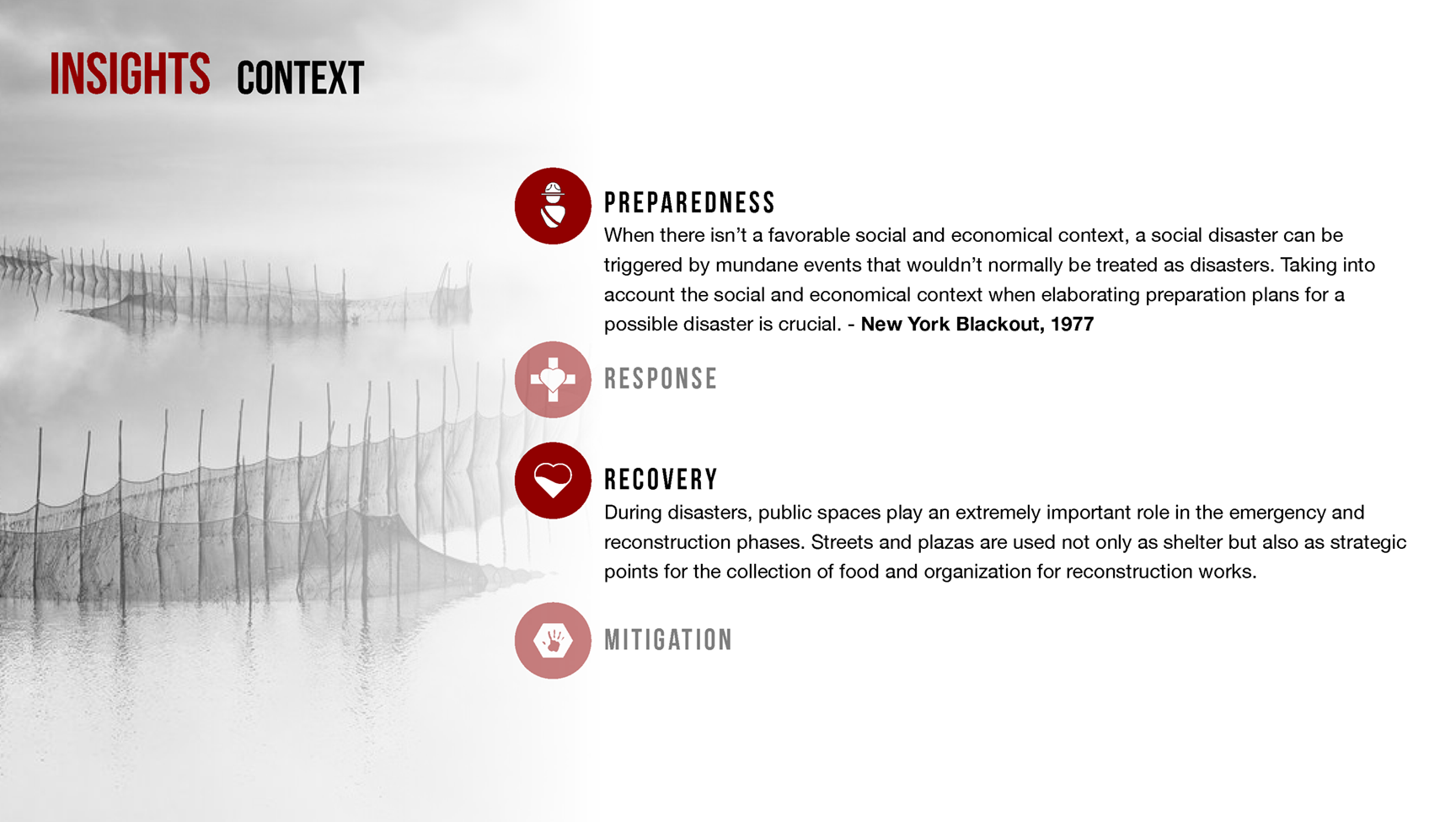
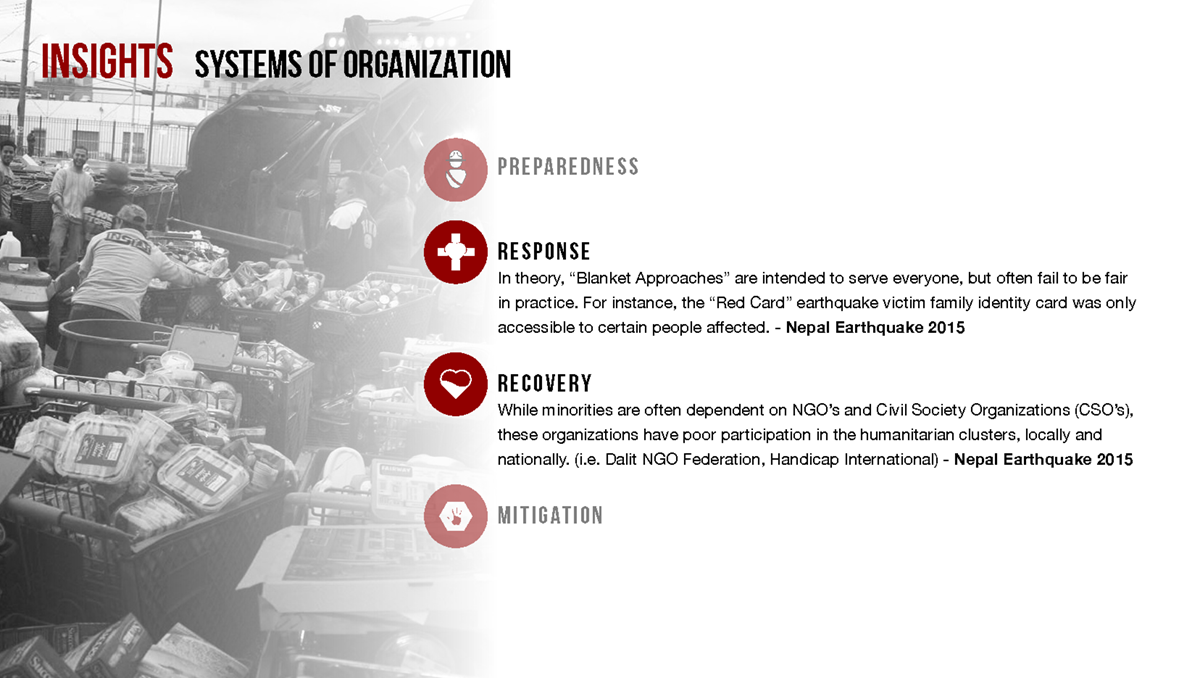
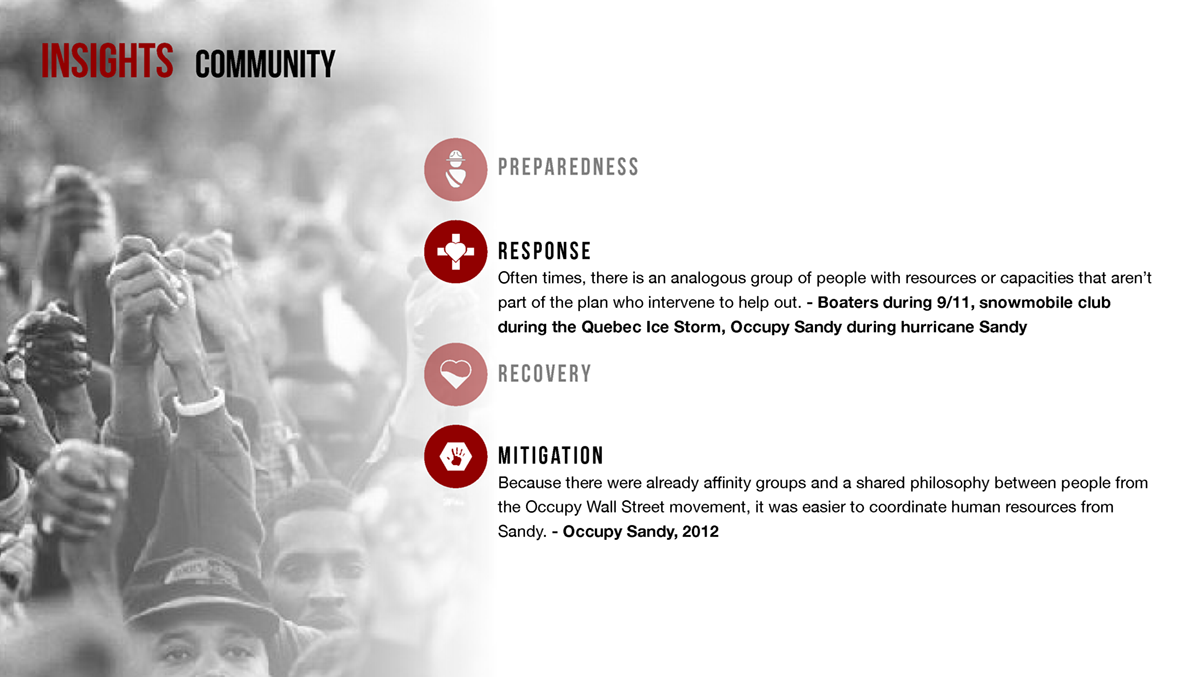
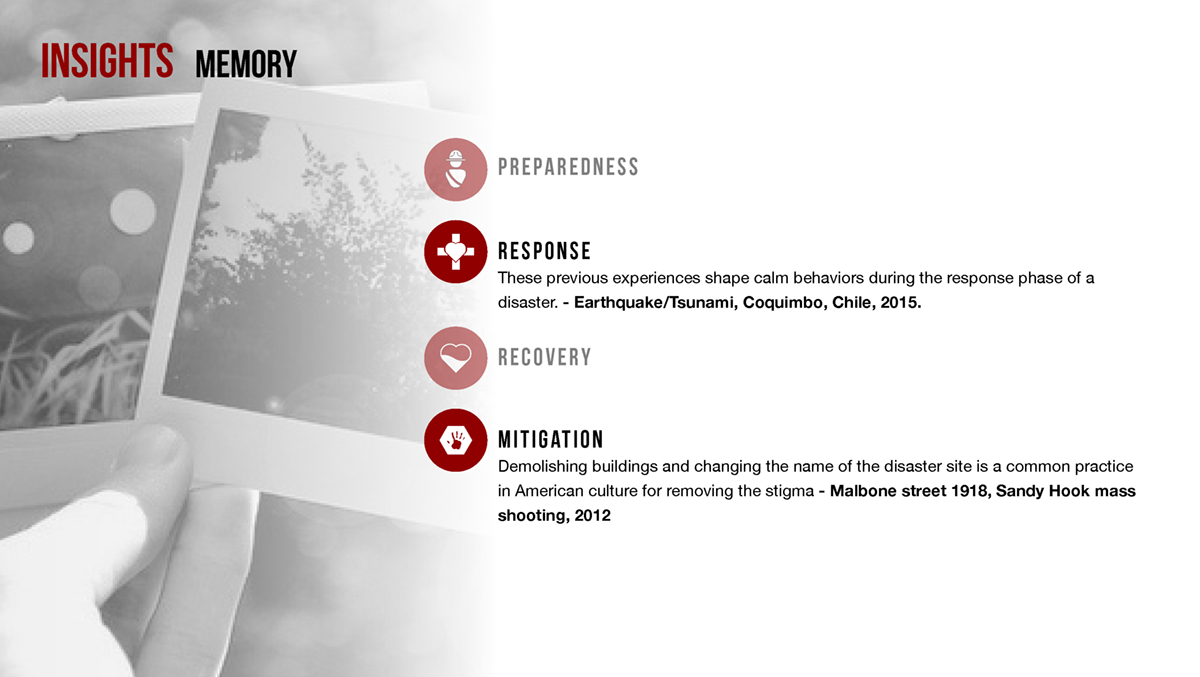

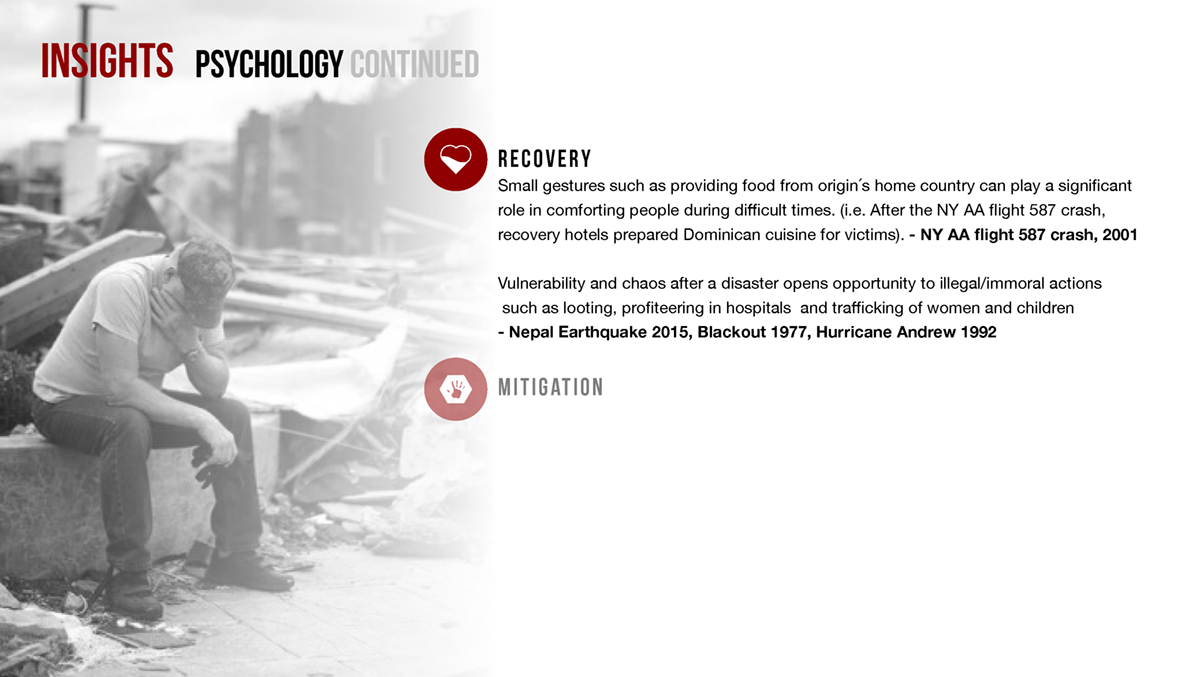
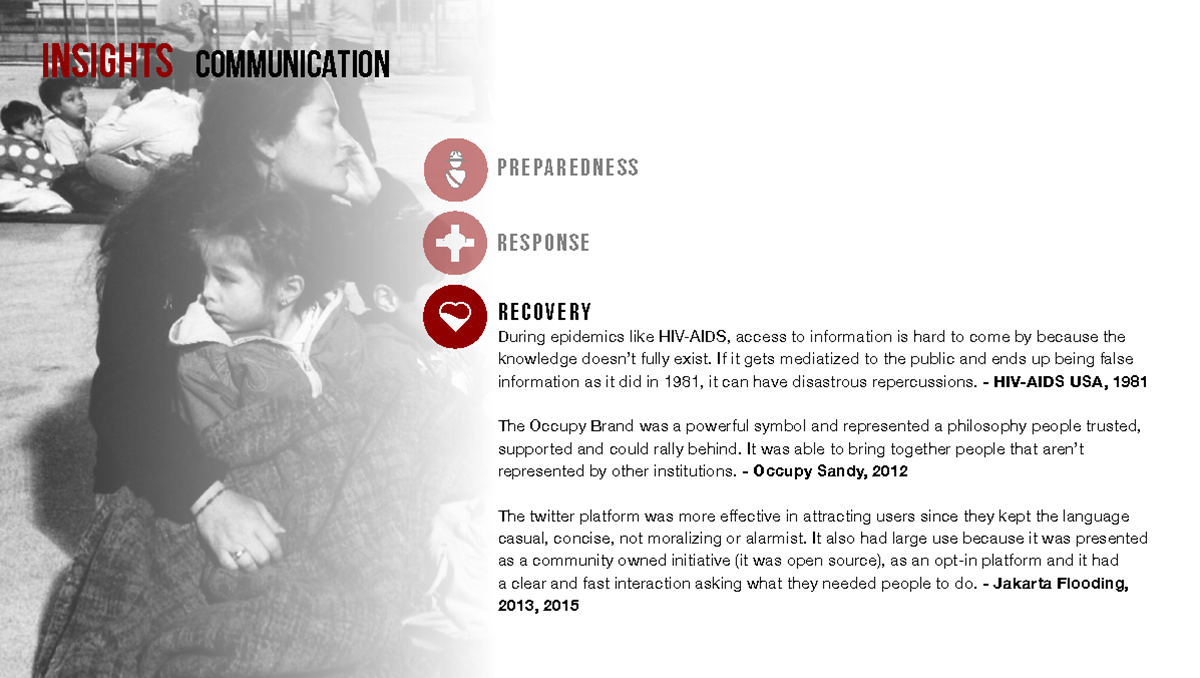
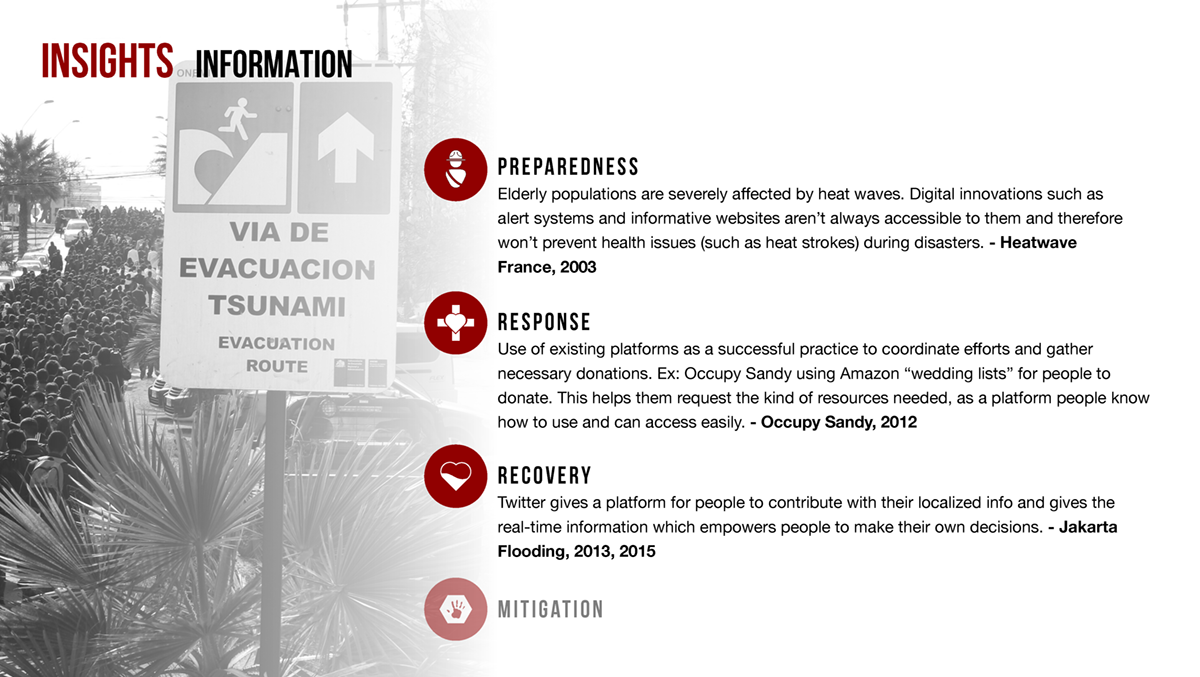
Problem Definition
phase 3: Ideation
Before the concept development, team members independently drafted potential response ideations in case of a natural disaster. Some were tangible products, and others were human-centered services. Using a service-pairing exercise, we were able to construct a response system containing both tangible products and human-centered design service.
Service Mapping
Phase 4: Prototyping
Variations of the kiosk and collateral were developed from 2D cardstock ideas and then quickly transformed into 3D prototypes. The kiosk was composed of 3D applications from matboard and cardboard. Acrylic materials and vinyl adhesives were also used to develop the frame. Product Frame by: Melika Alipour
User Flow: Paper Draft
Outcome: Simulation & Testing
Through Parsons School of Design, teams of designers collaborated to perform a disaster preparedness simulation of their project proposals at The High Line in NYC. Stakeholders, guests, and the public were invited to participate and evaluate the projects. The simulation took attendees through a before, during, and post-stage of a disaster using marked boundaries, sound installation, and designed prompts. Each stage introduced the respective design proposal. Dear Neighbor was simulated during each stage. Click the audio links for a brief audio experience.


